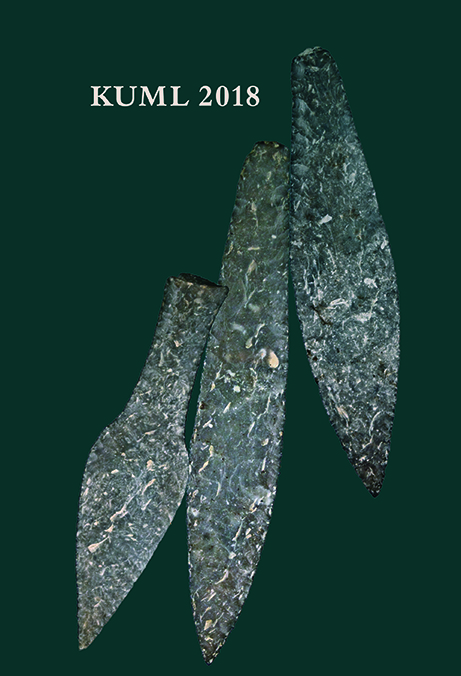Small glass rings from Early Middle Ages
Symbols of ethnicity, fashion phenomena or both?
DOI:
https://doi.org/10.7146/kuml.v67i67.110843Keywords:
glass rings, early middle agesAbstract
Small glass rings from the Early Middle Ages
Symbols of ethnicity, fashion phenomena or both?
The large number of stray finds, metal-detector finds and finds from archaeological excavations of Early Medieval sites now available are instrumental in providing a comprehensive picture of the clothing of the time and its accessories that no other source can provide. These artefacts may and should challenge traditional perceptions of ethnicity, gender and the distribution of fashion phenomena as further finds are added to the record over time.
Glass rings are traditionally ascribed to Slav peoples and for use on Slav women’s costumes. To date, they have therefore been perceived as expressions of Slav ethnicity when found archaeologically in southern Scandinavia. They appear for example in the early urban centres such as Lund and Sigtuna but are also found in relatively large numbers in Schleswig (figs. 1-4). Until now there have only been relatively few published Danish finds, including from Odense (fig. 6) and Ribe.
Especially during the last two decades, the number of finds from Ribe has grown significantly so the total number of intact glass rings and fragments has now reached 252. These objects were found in cultural deposits dating from c. 1050-c. 1250, in a series of different contexts and distributed across most of the town of Ribe (figs. 7-8). A small proportion of the rings (42 examples) have a diameter which prompts an interpretation as finger rings (fig. 9). Their size suggests they were worn by women and children, while finger rings for men are less frequent. Most of the rings are of well-preserved translucent glass in beautiful colours, primarily yellow, green and blue-green. Some have decorative details such as twists and applied pips (fig. 10), others have been decorated with glass of various colours (figs. 9-11).
The largest group consists of smaller rings, which are too small to have been used as finger rings. These are the so-called ring beads (figs. 12-14). They are often now of brownish, degraded and frequently crumbling glass, probably potash glass which is less durable. We do not know precisely how these rings have been used, but there is much to suggest that they were employed in several ways. For example, by being sewn on to clothing or head coverings or worn in the hair (fig. 5), or as pendant on other ornaments. They are often found in batches, which suggests that, at least in some cases, they were used together (fig. 14). The division into two artefact types, based on internal diameter, is only a guideline because it is possible that glass rings were perceived as multifunctional costume accessories, regardless of size. Larger rings could also be sewn on to clothing or function as pendants, hair ornaments or similar.
Finger rings, ring beads and glass beads have, concurrently, all been part of ornament fashion for a period (fig. 16), but the glass beads slowly disappear from the finds picture during this period, being replaced by small glass rings.
Both finger rings and ring beads were associated with brooches, pendants etc. (fig. 15). The preservation conditions mean that we do not know whether, like the metal ornaments from the period, they reached out to the rural settlements, but this is a possibility.
Finds of North German glass workshops, which manufactured ring beads of forest glass, and glass analyses of a workshop that made rings of lead glass in Erfurt, show that major production of these objects was undertaken in several places in the 11th-13th centuries, outside the Slav area. Glass analyses show that the lead used in the Erfurt workshop was a by-product of silver-mining in the Harz area. At the same time, references in written sources to the production and use of glass rings, together with the growing archaeological record, show that these objects were extremely widespread, and that the interpretation of their significance and use as being narrowly associated with ethnic Slavs must be re-evaluated. It seems more likely that both glass finger rings and ring beads should be seen as cheap and short-lived costume jewellery, which was imported and sold in the important trading towns of the 11th-13th centuries to a clientele with a taste for colourful ornaments.
Mette Højmark Søvsø
Sydvestjyske Museer
Published
How to Cite
Issue
Section
License
Fra og med årgang 2022 er artikler udgivet i Kuml med en licens fra Creative Commons (CC BY-NC-SA 4.0).
Alle tidligere årgange af tidsskriftet er ikke udgivet med en licens fra Creative Commons.


